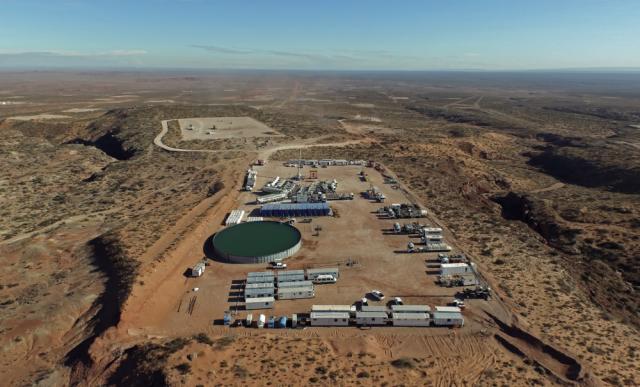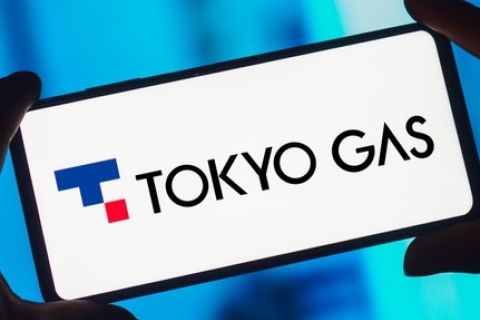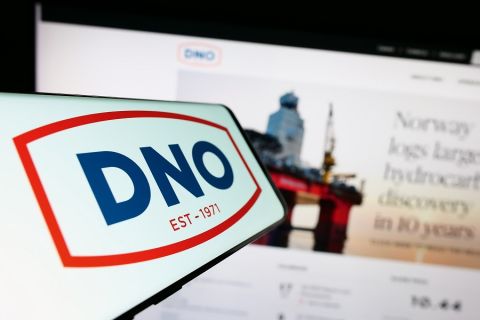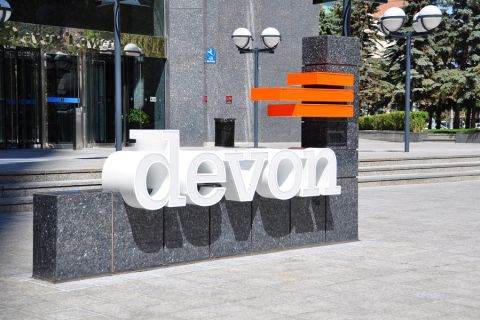
YPF's unconventional oil extraction activities in Argentina's Vaca Muerta formation. (Source: Shutterstock.com)
Stellar financial results from Argentina’s crude oil and natural gas shale producer YPF SA continue to be overshadowed by economic uncertainties and rising political tensions in the build-up to presidential elections next year, according to Credit Suisse analysts.
YPF reported adjusted EBITDA of $1.5 billion and net income of $798 million in the second quarter on slightly lower combined production but higher commodity prices. Results were driven “primarily on the back of improved pricing across our business segments, despite further cost increases,” YPF executives said last week during the company’s quarterly webcast.
“Although YPF’s [second-quarter 2022] results came in very strong and above our and market’s expectations, we prefer to remain cautious on the name owing to the macro situation in Argentina,” Credit Suisse research analysts Regis Cardoso and Marcelo Gumiero wrote last week in a research note, adding the company confronts headlines related to its over-dependence on Argentina’s economy, political intervention on prices, and the longer-term energy transition.
“We believe the Argentine government faces a difficult challenge to tackle the high inflation and the local currency devaluation ahead of the presidential elections in 2023,” the Credit Suisse analysts wrote. “In fact, we remind investors that YPF’s results look strong only if one looks at it at the official FX rate, which could be misleading given the imposed capital flows restrictions in Argentina. Results would not seem so strong if converted at the significantly more depreciated unofficial [‘blue’] FX, in our view.”
The analysts were positive on the recent appointment of Sergio Massa, a former lower house leader, to head Argentina’s Ministry of Economy, and noted his appointment was highly received by the market. Despite the reception, the new economic minister is Argentina’s third in less than a month under President Alberto Fernandez. Massa replaced Silvina Batakis who assumed the position in early July after the resignation of Martin Guzman.
Besides double-digit inflation and rising energy costs across the board, Massa will inherit an economy that lacks sufficient central bank reserves, according to Bloomberg data. He will also assume the defense of a country that is continuously under the strain of ongoing negotiations with the International Monetary Fund regarding debt payments.
Better Operating Results
Argentina is home to the world’s second-largest recoverable shale gas resources at 802 Tcf and the fourth-largest recoverable shale oil resources at 27 billion bbl, according to details published by the U.S. Energy Information Administration (EIA). The South American country is also home to the Vaca Muerta formation, the largest and most developed unconventional play outside of the U.S.
The formation has played a crucial role in YPF's production growth in recent years and holds vast untapped potential that could be a game-changer for the company and Argentina if transportation bottlenecks are resolved and the macro environment doesn’t turn off investors.
YPF’s second-quarter financial results benefited from higher oil and gas prices, which averaged $65.10/bbl and $3.90/MMBtu respectively, despite average production of 504,000 boe/d. Production fell 0.4% sequentially from the last quarter but was up 9.3% compared to the second quarter 2021. Production in July edged higher to average 510,000 boe/d due to continued drilling and completion activities, YPF said, adding it expects capex in 2022 to reach nearly $4 billion compared to $3.7 billion earlier owing to inflationary pressures and an increase in activities.
Buenos Aires-based YPF’s drilling activities continue to make the most of operating efficiencies in the Vaca Muerta formation, which assist to generate positive results, the company said. The company noted significant rises sequentially and year-over-year in unconventional horizontal wells, drilling speed, frac speed and core hub development cost.
The operational results have allowed YPF to continue to reduce its gross debt, which now stands at $7.1 billion (net debt is $5.8 billion). The company’s net leverage position fell to 1.3 times net debt-to-12-month adjusted EBITDA in the second quarter, down from a peak of 4.9 times in the first quarter 2021, the company said.
Recommended Reading
DXP Enterprises Buys Water Service Company Kappe Associates
2024-02-06 - DXP Enterprise’s purchase of Kappe, a water and wastewater company, adds scale to DXP’s national water management profile.
ARM Energy Sells Minority Stake in Natgas Marketer to Tokyo Gas
2024-02-06 - Tokyo Gas America Ltd. purchased a stake in the new firm, ARM Energy Trading LLC, one of the largest private physical gas marketers in North America.
California Resources Corp., Aera Energy to Combine in $2.1B Merger
2024-02-07 - The announced combination between California Resources and Aera Energy comes one year after Exxon and Shell closed the sale of Aera to a German asset manager for $4 billion.
DNO Acquires Arran Field Stake, Continuing North Sea Expansion
2024-02-06 - DNO will pay $70 million for Arran Field interests held by ONE-Dyas, and up to $5 million in contingency payments if certain operational targets are met.
Report: Devon Energy Targeting Bakken E&P Enerplus for Acquisition
2024-02-08 - The acquisition of Enerplus by Devon would more than double the company’s third-quarter 2023 Williston Basin production.






